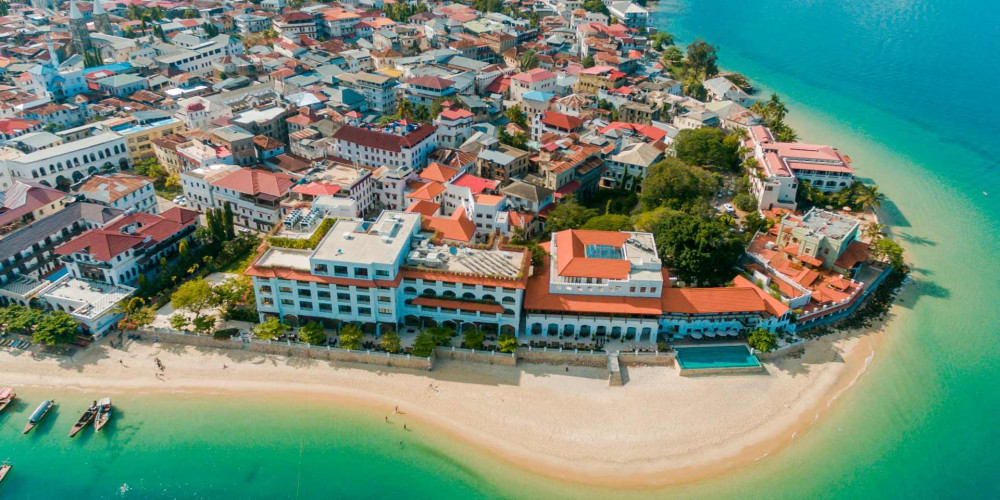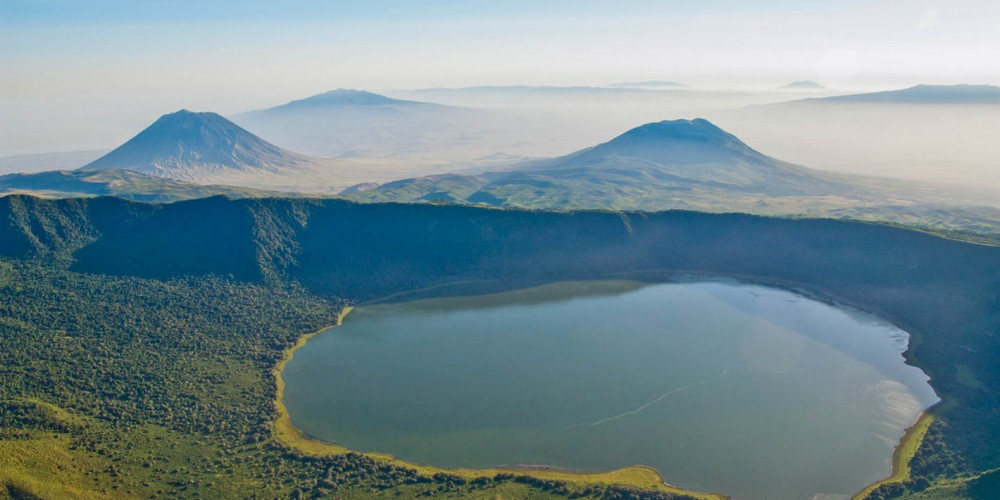

ZANZIBAR
When it’s time to rinse off the dust of the plains, there is really no better place to be than the tropical Swahili Coast and Zanzibar Island, infused with natural beauty and a heady mix of African, Arabian, Persian, and Indian cultural influences.
The shimmering coastline of palm-fringed white beaches and reefs is indented with creeks and mangroves while the warm aquamarine waters are beaded with tropical islands. Baobab, cashew, and mango trees and fragments of ancient coastal forest color the narrow strip between the coast and uplands green. When palms and casuarinas frame your view of sand, sea, and lateen-rigged dhows, it is time to breathe out and relax, soothed by the balmy onshore breeze.
- Area 2,461 km²
- Location Coast of east-central Africa
Climate
28.4°C / 83.1°F- Average sea temperatures off Zanzibar
December- March is generally hot and dry April- Mid June is wet because of long rains
July-August is dry and breezy with little rainfall October-November is when the short rains appear.
Getting There
There are several ways to reach Zanzibar. One can fly into Dar es Salaam, Tanzania with KLM Royal Dutch, British Airways, Emirates, Qatar Airline, South African Airways, Swiss Air or Kenya Airways then connect with a domestic flight to Zanzibar can also be very conveniently reached from Dar es Salaam with daily sea ferry schedules taking only two hours traveling time.
Alternatively, Airlines such as precision Air, ZanAir, Auric Air, Reginal Air, and Coastal Air have daily scheduled flights to Zanzibar from Dar es Salaam taking only 20 minutes of flying time
Attractions
Swahili Culture
The monsoon winds of the Indian Ocean have shaped the history and culture of this sparkling coastline, carrying traders and seafarers from Arabia, Persia, India, and even China to and from Africa on their seasonal routes.
Swahili language and culture blend African and Eastern influences in a fusion that is both exotic and easy on the senses.
The Kilwa Sultanate that once ruled the coast from Kenya to Mozambique fragmented into several city-states that flourished with the trade winds. The breezes of the fabled island of Zanzibar still carry the heady scents of spices; while Swahili culture infuses Stone Town’s winding alleys with taarab music, magnificent carved doors, and hospitable people. Echoes of a sadder history linger in the ruins and caves once used by slavers all down the coast.
Over 50 – Numbers of islands and islets make up the Zanzibar archipelago
12 hours-The length of each day and night here on the equator.
Zanzibar marked fifty years of self-rule with tourism on its economic agenda. Targeting tourism as the island’s major economic venture in forthcoming years, the Zanzibar government has embarked on a marshal plan aimed at pulling more tourists to this Indian Ocean tourist paradise.
The semi-autonomous archipelago celebrated its half-a-century of self-governance on Sunday, bringing its priorities to boost tourism and transport areas so as to attract more visitors to its warm beaches.
Zanzibar government has last month endorsed a marketing drive.
Targeting to raise the island's tourism profile, making the island compete with other Indian Ocean islands.
The “Destination Zanzibar” drive is being implemented by Grassroots Traveler, a company based at the Island’s famous historical site of Stone Town.
When successful, then, Zanzibar will be positioned to compete with Seychelles, Maldives, Mauritius, and La Reunion, the leading tourist islands in the Indian Ocean Rim.
Zanzibar’s tourism promotional drive had so far been launched to focus on the Gulf States through Dubai in the United Arab Emirates which stands as a focal point for travelers to East Africa and the Indian Ocean Rim.
Dubai is Zanzibar’s air connection hub where most tourists visiting this Island connect their flights through the Emirates Airline, the leading air carrier for tourists and business travelers to both Tanzania and Zanzibar via Tanzania’s capital city of Dar es Salaam.
Looking to attract more tourists to its famous pristine beaches and exotic ambiance, “Destination Zanzibar” also aims to showcase the island as an environmentally sustainable destination with a variety of cultural events and experiences that will heighten the travel experience.
"Destination Zanzibar" aims to position the island as the best destination with more than sun, sea, and sand and highlight one of kind experiences visitors can expect.
Tourism is Zanzibar's leading source of revenue, earning 72 percent of the islands' foreign currency and 27 percent of its annual Gross Domestic Product.
In order to make tourism more viable and sustainable, various committees have been formed to foresee and monitor tourism supporting activities that would help to speed up its growth.
The island is looking to be the best tourist destination in the Indian Ocean region should ongoing plans to boost attractions in the isles succeed.
Moving a motion for legislators to deliberate and approve a US$10 million budget for the Ministry of Tourism mid-last year, minister Said Ali Mbarouk informed said that "all is going on well" to achieve the objective.
He said strategies to make Zanzibar the leading tourism destination included improving services and the working environment for staff in the tourism commission, and advertising abroad.
"We have been improving the advertising section, evaluating and monitoring service delivery to guests, learning from others by taking part in international exhibitions, capacity building for local people engaged in the sector," Mabrouk said.
"The immediate plan is to visit Seychelles to share experience how they are doing in advertising the island and improving tourism attraction areas. It is important because tourism is our priority," Mbarouk said.
Tourism growth in the island has been attributed to the increase in the number of tourist class hotels springing up on the island’s beaches of Nungwi, Stone Town, and recently, the under-water hotel in Pemba, a twin-island.
These high-class hotels and beach resorts have attracted prominent personalities including Bill Gates and His Highness the Aga Khan.
A total of 354 hotels and tourist guest houses, all with 7,421 rooms accommodating 14,076 beds have been established on the island since 1990 when tourism development took off in the island.
It is estimated that some 13,017 employees are currently working in the Island’s tourist sector, while 45,000 others are employed in other sectors directly connected to tourism. The aim of the Zanzibar government is to ensure that 50 percent of the island’s employees fall under the tourism sector come the year 2020, officials said.










